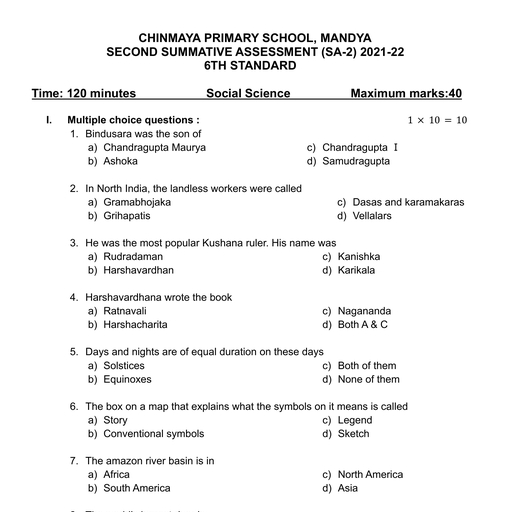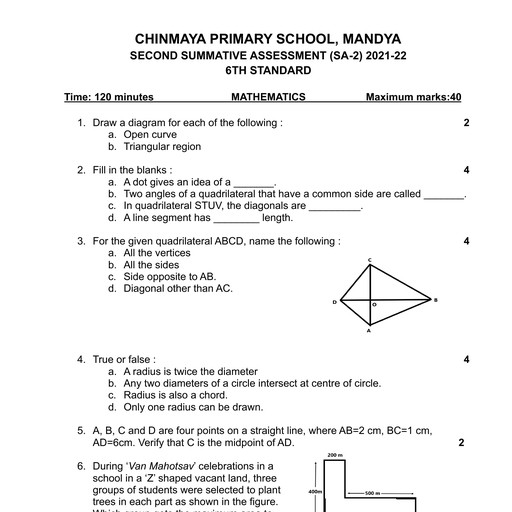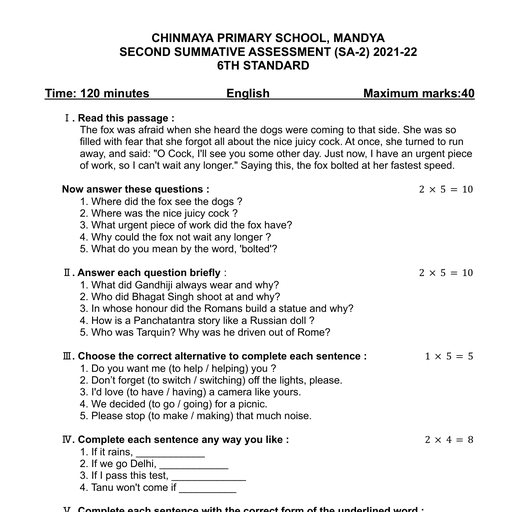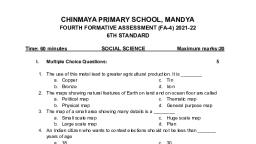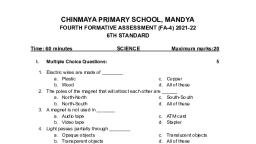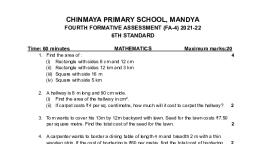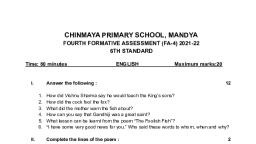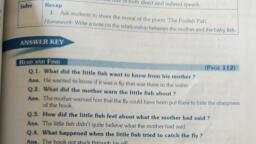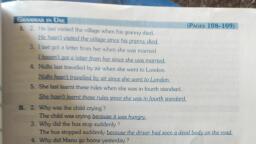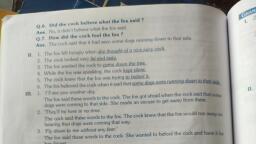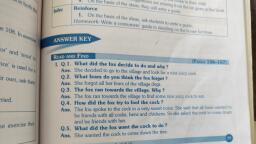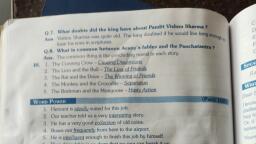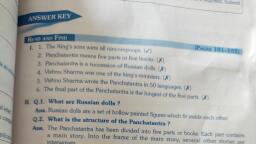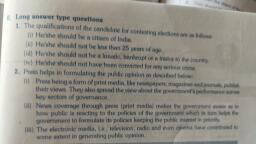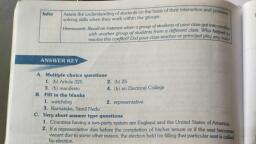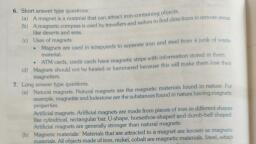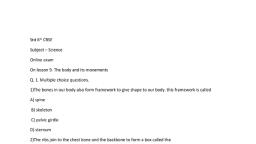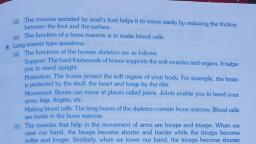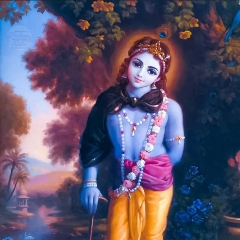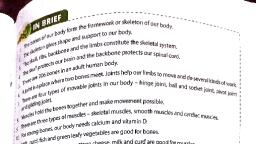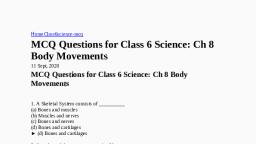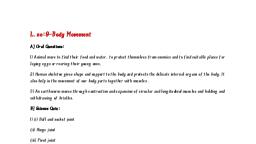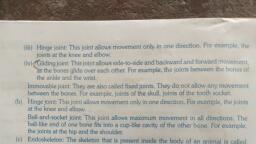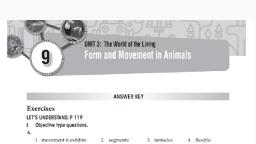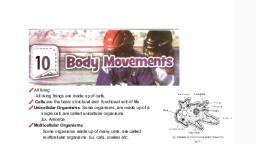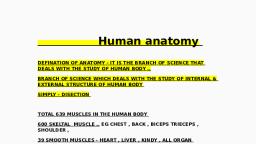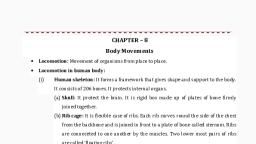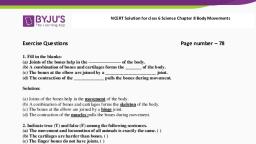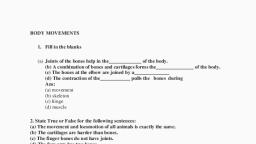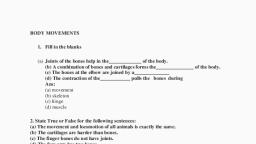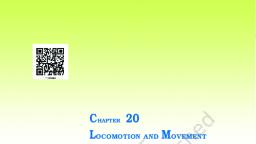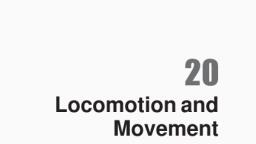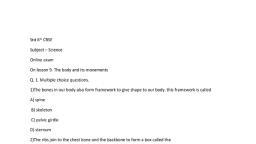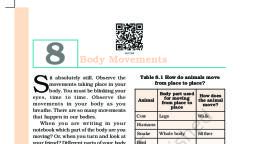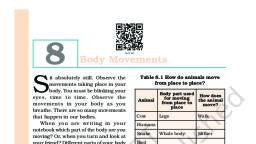Page 1 :
— Le,, , (d) The mucous secreted by snail's foo, , t helps it to move 4, between the foot and the surface J ove easily by reducing the friction, , (e)_ The function of a bone marrow is to make blood cells, 9. Long answer type questions, (a) The functions of the human skeleton are as follows, , Support: The hard framework of bones supports the, you to stand upright, , Protection: The bones protect the soft organs of your body. For example, the brain, is protected by the skull, the heart and lungs by the ribs, , Movement: Bones can move at, arms, legs, fingers, etc., Making blood cells: The long bones of the skeleton contain bone marrow. Blood cells, are made in the bone marrow., (b) The muscles that help in the movement of arms are biceps and triceps. When we, raise our hand, the biceps become shorter and harder while the triceps become, softer and longer. Similarly, when we lower our hand, the triceps become shorter, and harder while the triceps become longer and softer. In this way, the muscles help, in the movement of arms., (c) Contraction and relaxation property of the muscles is responsible for the movement of, bones. A combination of two muscles is required for the movement of a bone. When, a muscle contracts, it pulls the bone away from the joint. When a muscle relaxes, it, allows the bone to move away from itself and towards the joint. Thus, two muscles, work in pairs to move a bone., The special features of a bird's body that enable it to fly are: q, ¢ Their forelimbs are modified into wings. A, © They have hollow bones and streamlined body shape., ‘© The flapping of wings provides movement and lift to the bird., (e) (i) Movement in earthworm is caused by the elongation and shortening of body, = muscles. When an earthworm moves, it first extends the front part of the body, is, keeping the rear part of the body fixed to the ground. Now, it fixes the front part, of the body and releases the rear part and then shortens the body by pulling, the rear part forward. A number of minute hair-like bristles are present on the, underside of the body that help it to keep its grip on the ground., ff i i i ught about by its muscular foot. The muscular foot, Y esses fea that om the body of snail forward. The muscular, foot also produces a slimy substance called mucous that reduces the friction, between the foot and the surface it moves on., , 10. Distinguish between, “(@) Freely movable joints:, , are of four kinds:, (i) Pivot joint: This type of joint allows rotation all around, The round end of one, , bone fits into a ring formed by the other bone. For example, the joint between, , the neck and the head. ‘ a, (ii) Ball-and-socket joint: This joint allows maximum pee E ne eet iT, ball-like end of one bone fits intoa cup-like cavity, the joints at the hip and the shoulder. |, , soft muscles and organs. It helps, , Places called joints. Joints enable you to bend your, , (d), , These joints allow free movement between the bones. They

